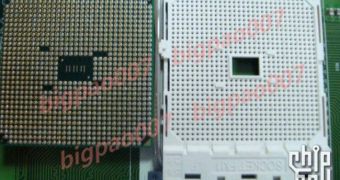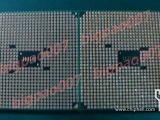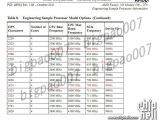At the beginning of next year, AMD is expected to unveil its first APUs based on the Bulldozer architecture, code named Trinity, more information about these chips making its way just recently to the Web.
Spotted by Hardcore Hardware, the new Trinity pictures and slides confirm a series of other leaks that made their appearance in the last couple of weeks, but also bring a series of new details about the AMD chips.
Some of the most important of these come from a table showing the specifications of AMD's engineering sample Trinity APUs, which include either two or four Piledriver processing cores and have TDPs of 65, 100 or 125 Watts.
The operating frequencies seem to vary from 2.2GHz to 3.8GHz, and with the help of Turbo Core 3.0 technology some of these APUs can even reach or go beyond the 4GHz mark.
As far as the integrated graphics is concerned, this seems to be clocked between 563MHz and 711MHz, and Turbo Core should also be able to increase these frequencies to higher values.
AMD's next-generation APU combines processing cores based on the Bulldozer architecture with a VLIW4 GPU derived from the Cayman graphics used inside the Radeon HD 6900 series.
These cores will go by the name of Piledriver and, much like the current Llano APUs, lack any sort of Level 3 cache memory as AMD wanted to increase the die area available to the on-board GPU.
In terms of computing power, Trinity is expected to be about 30% more powerful than the current Llano APUs and will also support a series of new instructions sets introduced with the Bulldozer architecture, such as AVX and AES-NI, as well as DDR3-2133 memory.
On the graphics side, the new Radeon HD graphics core is expected to deliver 30% better performance than AMD current A-Series APUs, while also coming with a new Video Compression Engine and support for AMD's EyeFinity technology.

 14 DAY TRIAL //
14 DAY TRIAL // 



